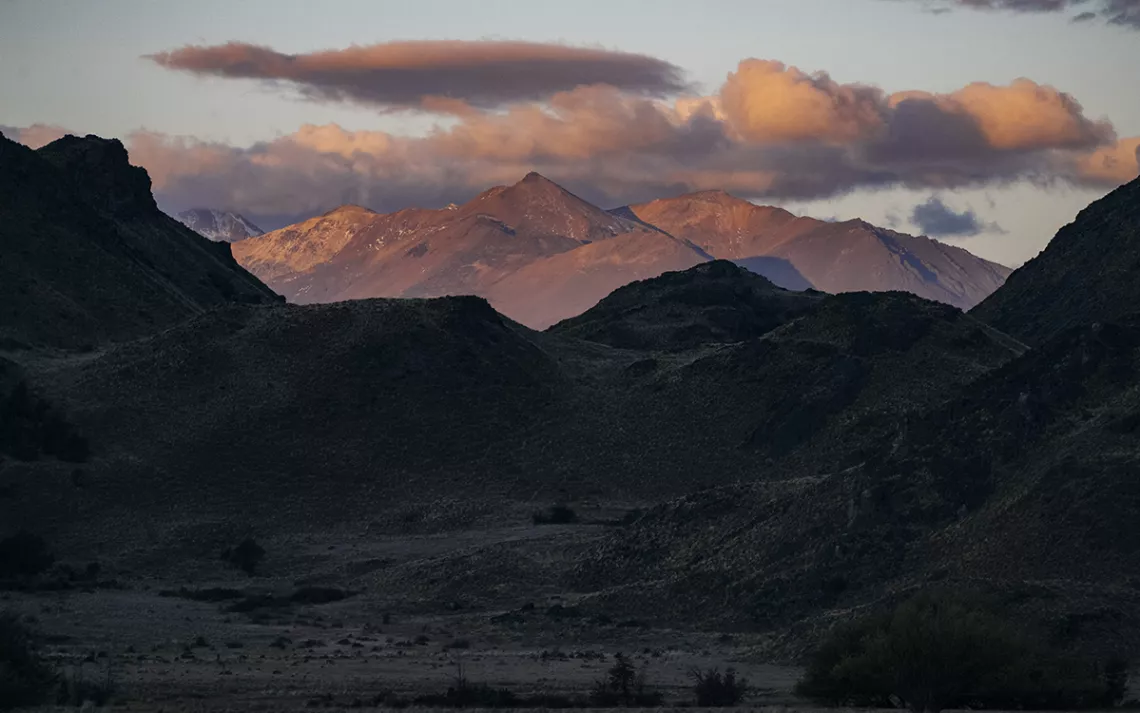In National Parks Is the Preservation of the World
Large-scale land conservation is crucial to addressing the biodiversity crises

Photo by Kiliii Yuyan
It’s not every day that you get up in the morning and give away a million acres. But in April, I was honored to do exactly that, via my organization Tompkins Conservation.
Huge tracts of temperate rainforest, remote mountains, restored grasslands, and pristine waterways in the south of Chile now enjoy some of the highest levels of protection. They are Pumalín-Douglas Tompkins National Park and Patagonia National Park, which represent a combined area more than twice the size of Yosemite National Park.
It started with a wild idea.
In the early 1990s, my late husband, Douglas Tompkins, and I explored the powerful landscapes of southern Chile. Inspired by the region’s enormous potential for conservation, we began the work of creating future parks. We considered it our way of paying rent for living on this planet. Many thought we had hidden motivations or were plain mad. Doug had scaled the chiseled summit of the Andes’ Mt. Fitz Roy and founded the North Face and Esprit clothing companies. I had worked my way up from box packer to CEO of Patagonia Inc. Though we were used to risk and hard work, we could not have been prepared for the odyssey of building parks from scratch.
Of course, we did not do it alone. Over 25 years, hundreds of people worked tirelessly toward this endeavor, from volunteers to trail builders, carpenters and wildlife experts. Our challenges ranged from the known (removing hundreds of miles of fences so that the guanaco, a doe-eyed camelid, could once again roam free) to the unimaginable (like Chaiten Volcano’s explosive 2008 eruption that rained tons of ash over Pumalín Park). Despite the setbacks, the work continued and in April we formally handed over these parks to the Chilean government, whose partnership made it all possible.
National parks help create the kind of world we want to live in. It’s easy to understand that clean water, pure air, and healthy soil are essential to life. But wild spaces also have the power to nurture our well-being and restore our ties to something greater than ourselves. These were lessons that Doug and I learned over and over on the edge of the Andean wilderness. It turns out that humans are not the only ones in need. Wildlife, under threat from losses in habitat and a changing climate, also has a right to exist in a world in balance. Having a vast network of national parks in Chile will help restore populations of native guanaco, puma, and endangered south Andean deer and bring other animals back to their rightful place.
The benefits of national parks do not stop at their boundaries. They can boost the local economy, providing jobs in tourism or conservation-related activities. In the United States, for every dollar invested in national parks, $10 returns to the economy in recreation and tourism spending. But there’s much more. Science shows that national parks are a vital tool in addressing climate change. A 2017 study published by the National Academy of Sciences indicates that natural climate solutions such as land and water conservation can provide over one-third of the climate mitigation needed between now and 2030 to stabilize global warming. Pumalín-Douglas Tompkins National Park alone sequesters an estimated 228 million metric tons of carbon in its soil and vegetation. In the same year in which Chile will host the World Climate Summit, the country’s commitment to its national parks marks a crucial step forward in supporting the health of the planet.
The designation of national park creates the highest form of environmental protection, though without proper funding, this can mean little. Chilean Patagonia, with its network of 17 national parks known as the Route of Parks, is now home to 91 percent of the country’s territory protected as parkland. But the region lacks essential funding for national park infrastructure, trails, and management—all of which is needed to fuel economic development in gateway communities and set the foundation for long-term conservation. For this reason, Tompkins Conservation joined Chile’s President Sebastián Piñera and the Pew Charitable Trusts in May to set in motion the “Route of Parks Fund: Protecting Patagonia Forever,” to create a large public-private fund to protect this extraordinary 1,700-mile route. We have ample proof that the global decline in nature has reached rates unprecedented in human history. When it comes to protecting nature, we must think bigger than ever before.
Over a quarter century ago, the great tradition of philanthropy in the United States’ parks inspired Doug and me to do this work. It is strange to think that today, as Chile sits poised to become a global model for conservation, it is America’s parks and endangered species that are under threat. Wherever we are, we must remember that taking care of these parks cannot only be the responsibility of the government, but also the work of society, of each one of us, so that this global patrimony may be conserved and protected for the future.
 The Magazine of The Sierra Club
The Magazine of The Sierra Club



